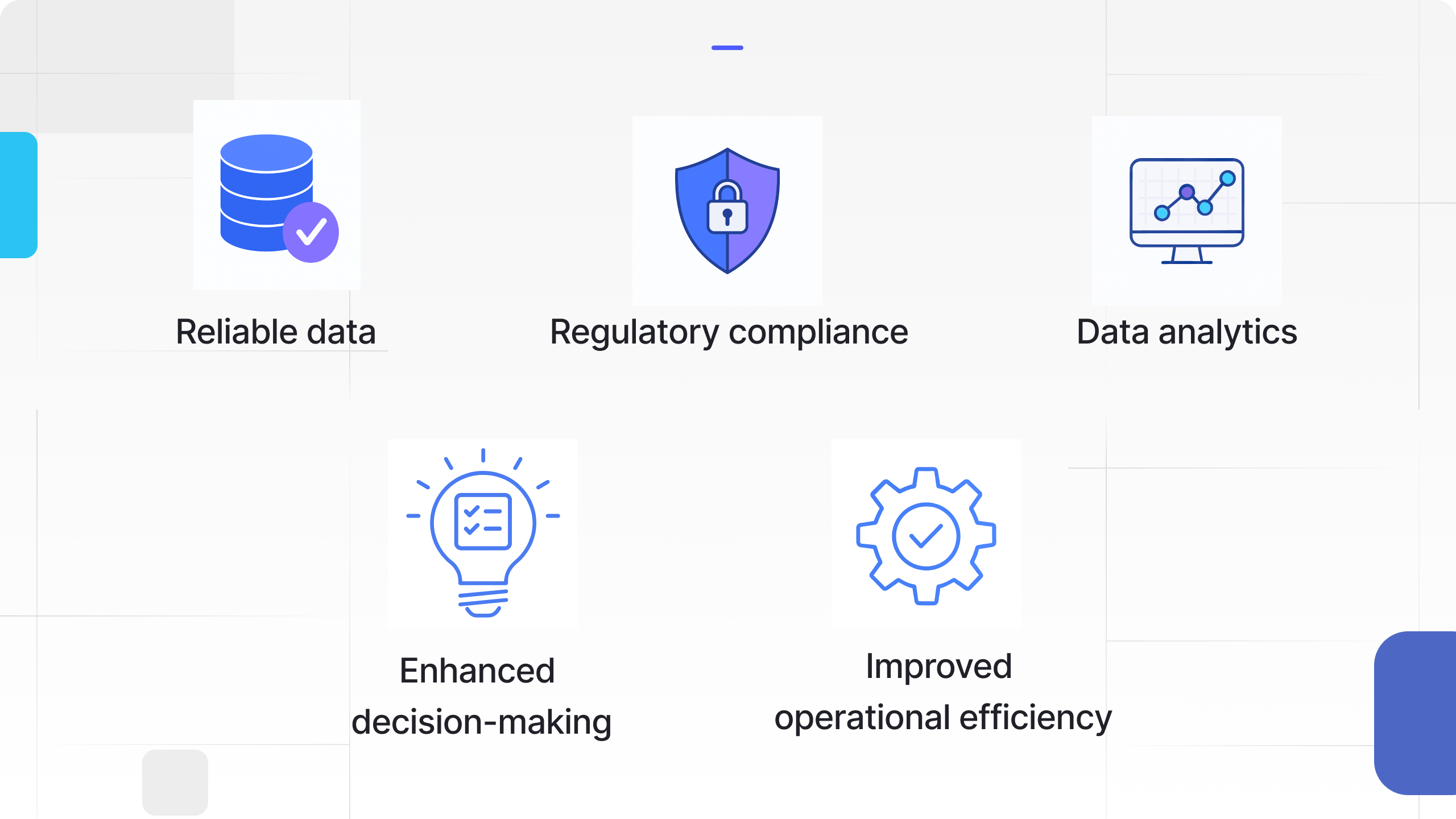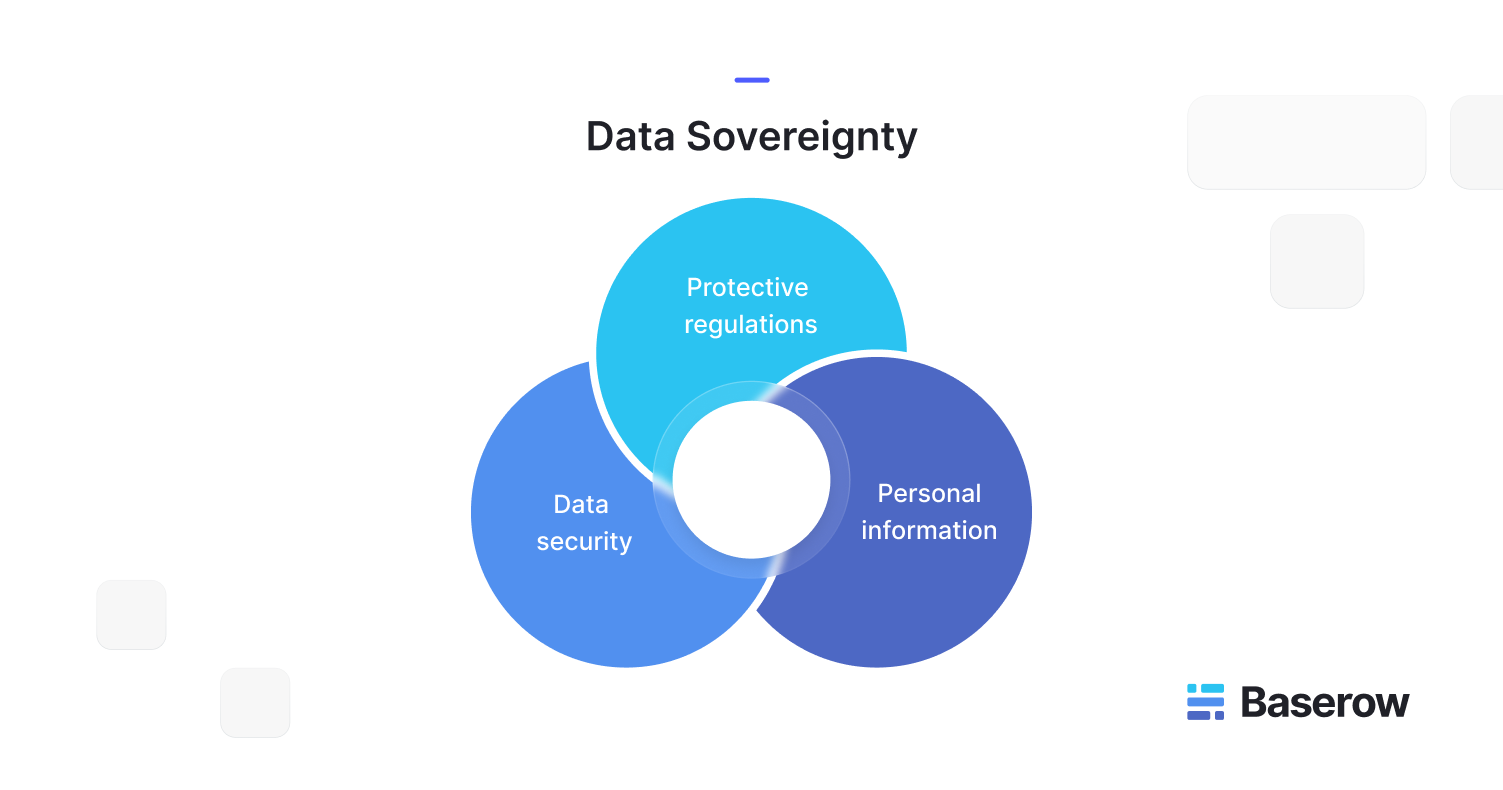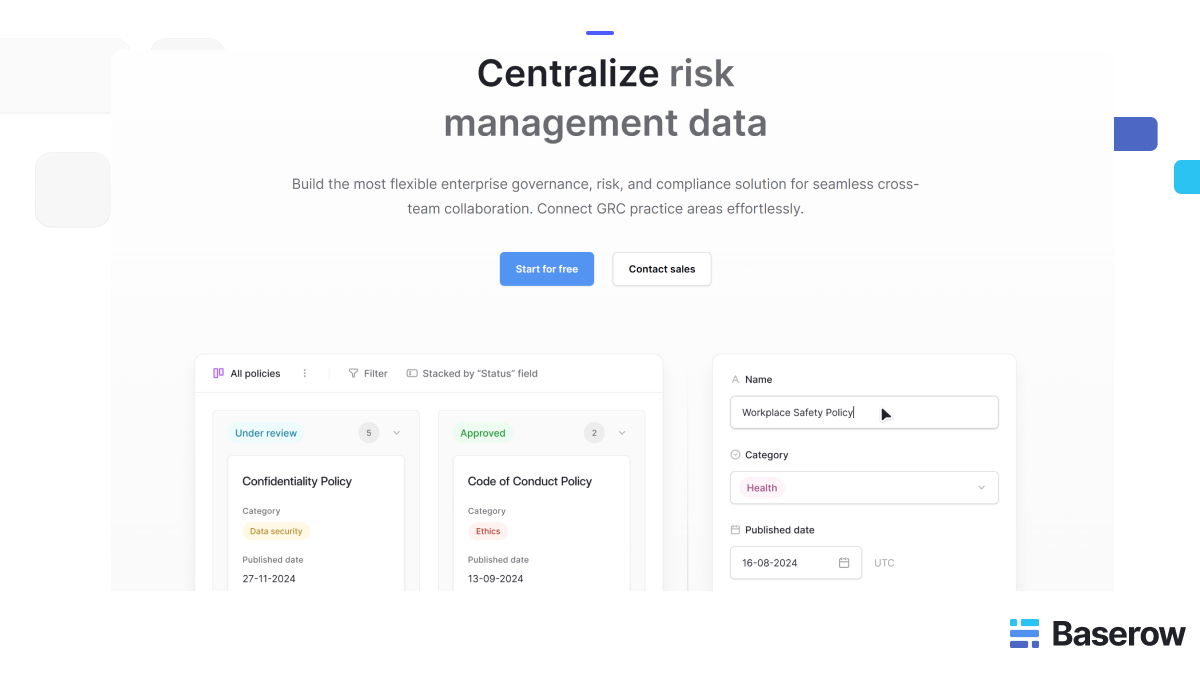
In today’s data-driven landscape, organizations generate and process vast amounts of information every second. While data is a powerful business asset, it can quickly become a liability if not managed properly. Inconsistent, inaccurate, or poorly secured data can lead to operational inefficiencies, regulatory penalties, and a loss of customer trust.
A Data Governance Framework is a foundation that helps organizations manage their data. It ensures the data is reliable, secure, and used well. Unlike general governance concepts that include risk and compliance broadly, data governance focuses specifically on the data itself — how it’s defined, accessed, maintained, and safeguarded.
Why You Need a Data Governance Framework
A strong data governance strategy does more than organize information; it turns data into a dependable asset that drives growth. Without governance, data can become fragmented and siloed, hindering its use in decision-making and analytics.
Moreover, compliance with evolving privacy and security regulations such as the general data protection regulation (GDPR) is nearly impossible without a structured framework. Regulators increasingly demand proof of accountability, including clear data lineage and strict handling of sensitive data.
By implementing a data governance framework, companies gain a comprehensive approach to controlling data access, improving data quality, and ensuring regulatory compliance. It enables organizations to support advanced data analytics initiatives confidently and securely, unlocking new business opportunities.

Core Components of a Data Governance Framework
- Defining Your Data and Setting Standards
The first pillar of effective governance is to define data clearly and establish universal standards across the organization. Standardization allows all stakeholders — from executives to technical teams — to speak the same language when it comes to data.
Creating data catalogs plays an essential role here. Data catalogs act as centralized inventories of your data assets, providing context such as definitions, sources, and usage guidelines. They help teams avoid duplication, identify sensitive data, and ensure consistent data interpretation.
Involving data stewards and data owners in this phase is critical. Data stewards maintain the quality and integrity of data, while data owners take responsibility for compliance and access control. By working together, they create a foundation that supports accuracy and transparency.
- Establishing Governance Teams and Roles
A data governance framework relies heavily on strong governance teams. These teams oversee policy creation, implementation, and ongoing enforcement.
Governance teams are typically made up of cross-functional stakeholders, including data stewards, data owners, IT leaders, and compliance officers. Each role contributes a unique perspective, ensuring the framework addresses both business and technical needs.
One of the most important tasks for governance teams is to establish and maintain data lineage. Tracking data lineage allows organizations to understand where data comes from, how it moves through systems, and how it’s transformed along the way. This not only helps with compliance but also builds trust among data users by offering full visibility into data sources and transformations.
- Compliance and Risk Management
Today’s organizations operate in an environment filled with complex compliance requirements. Failure to adhere to these standards can result in severe penalties and damage to brand reputation.
A data governance framework provides a structured approach to regulatory compliance, integrating privacy and security principles into data management practices. To deploy a data governance program, you need to put your policies, controls, and processes into action. This means making them a regular part of daily operations. By adding controls to data processes, organizations can protect sensitive data. This helps lower the chance of breaches and supports audits.
A data governance framework provides a structured approach to regulatory compliance, integrating privacy and security principles into data management practices. To deploy a data governance program, you need to put your policies, controls, and processes into action. This means making them a regular part of daily operations. By adding controls to data processes, organizations can protect sensitive data. This helps lower the chance of breaches and supports audits.
Addressing compliance proactively also simplifies external audits and reporting. Regulators and auditors increasingly expect clear documentation of data governance practices, including data lineage maps, access logs, and policies.

Steps to Implement a Data Governance Framework
- Assess Your Current Data Landscape
Before diving into policies and controls, organizations must understand their current state. This involves a comprehensive assessment of existing data assets, infrastructure, and workflows.
Key questions to consider:
- Where is your data stored?
- Who has access to it?
- How is data quality currently measured?
- Are there existing gaps in data security or integrity?
Identifying these factors helps organizations determine areas that need immediate improvement and define realistic objectives for their governance program.
- Design Your Governance Model
After assessing the landscape, it’s time to design a governance model that aligns with your organization’s needs. This involves setting up the structural components of your data governance program, including roles and responsibilities.
Defining clear ownership — through data owners and stewards — fosters accountability and ensures that data-related tasks aren’t overlooked. Policies on data quality, access, and usage should be created with input from business units, IT, and compliance teams to ensure practical enforcement.
Your model should also align with strategic goals, enabling governance to support innovation rather than hinder it. This integration ensures governance is seen as a business enabler, not just a compliance requirement.
- Deploy and Monitor
Once your governance model is designed, it’s time to bring it to life. Deploying a data governance program involves implementing the policies, controls, and processes you have defined — and making them part of everyday operations.
This step requires strong change management. Many organizations struggle because employees perceive governance as restrictive or bureaucratic. By involving business units early, clarifying benefits, and offering training, you can drive adoption and create a shared sense of responsibility.
A critical success factor in this stage is continuous monitoring. You need to monitor data usage, quality, and compliance regularly to ensure your framework remains effective. This includes establishing clear metrics and KPIs, such as data accuracy rates, reduction in data incidents, or compliance audit results.
Monitoring also uncovers opportunities for improving data practices. For example, you may discover gaps in data quality or access controls that need to be addressed. By continuously iterating and refining your framework, you keep pace with evolving business needs and regulatory changes.
Tools and Technologies Supporting Data Governance
Implementing governance without the right tools is like navigating without a map. Modern tools simplify enforcement of policies, automate data lineage tracking, and maintain high data quality standards.
One powerful approach is leveraging no-code and low-code platforms. A solution like Baserow helps organizations define and enforce governance workflows without requiring extensive IT resources. Baserow’s flexible database and collaboration features allow teams to design custom governance solutions, maintain detailed data catalogs, and manage permissions intuitively.
By empowering business users to participate in data management, Baserow enhances transparency and trust. Teams can collaboratively define data standards, track data movements, and maintain clear records for compliance and audits.
For organizations looking to scale their governance efforts, Baserow offers the ability to adapt quickly to new compliance requirements or changes in business strategy. Its no-code foundation allows you to iterate governance processes without significant delays or technical bottlenecks.
To explore more about supporting tools, check out Best Data Governance Tools and Top Data Management Tools.
How Baserow Supports Your Governance Journey
Organizations need tools that are flexible, scalable, and user-friendly to make data governance successful. Baserow offers a no-code platform that enables teams to design and implement custom governance workflows without relying heavily on technical resources.
With Baserow, you can build data catalogs, define user roles and permissions, and set up custom approval processes that align with your governance policies. Its intuitive interface makes it easy for business and technical users alike to collaborate, update data standards, and adapt processes quickly.
Because Baserow supports seamless integration and automation, it empowers organizations to handle evolving compliance requirements, maintain data quality, and manage sensitive data confidently.
Whether you are just starting your governance journey or scaling an existing program, Baserow provides a flexible foundation that grows with your needs.

Overcoming Common Challenges
While the benefits of governance are clear, several common challenges can derail progress.
Cultural resistance is one of the most frequent hurdles. Employees might see governance as an additional layer of bureaucracy or fear that strict rules will impede their work. This is why it’s crucial to frame governance as a business enabler — something that empowers teams to make better decisions using trusted data.
Balancing control with flexibility is another major challenge. An overly rigid governance model can stifle innovation and make it difficult for teams to experiment and adapt. On the other hand, too much flexibility can undermine data integrity and create compliance risks. Successful frameworks strike a balance by setting clear boundaries while allowing for operational agility.
Handling sensitive data correctly is essential. Mismanagement can lead to compliance violations, reputational damage, and financial penalties. Embedding security and privacy measures into your governance policies ensures that sensitive data is protected throughout its lifecycle.
Maintaining data accuracy is also critical. Inaccurate or incomplete data erodes trust and diminishes the value of analytics. Assigning dedicated data stewards to oversee data quality and proactively resolve issues is one effective way to uphold accuracy standards.
Platforms like Baserow help address these challenges by providing user-friendly, customizable tools that align with governance needs without compromising on flexibility. By integrating governance into daily workflows rather than treating it as a separate IT project, organizations can foster broad adoption and long-term success.
Future-Proofing Your Data Governance
As your business evolves, so will your data needs. To ensure your framework remains relevant, it must be designed with adaptability in mind.
A future-ready data governance framework is scalable, allowing you to handle growing data volumes and new data types seamlessly. This includes expanding your data catalogs, introducing new policies, or adjusting controls as your business processes change.
Emerging privacy and data protection laws around the world — including extensions and regional variants of the general data protection regulation (GDPR) — require organizations to be agile. Staying ahead of these compliance requirements protects your business from unexpected risks and positions you as a trustworthy data steward to customers and partners.
Integration with data analytics tools is another key consideration. Analytics can uncover insights into data quality issues, usage patterns, and compliance risks, helping governance teams make informed adjustments.
Future-proofing also means embedding governance into the organizational culture. This involves promoting data literacy, encouraging all employees to see themselves as data owners in their respective roles, and aligning governance initiatives with strategic business goals.
By fostering a culture that values data stewardship and continuous improvement, organizations can build a robust governance program that not only meets today’s standards but is prepared for tomorrow’s challenges.
Building Momentum with Your Data Governance Program
For many organizations, launching a data governance framework feels like a monumental task. But rather than seeing it as a one-time project, think of it as an ongoing data governance program that evolves and improves over time.
Start small — for example, pilot your governance efforts within a single department or business unit. This approach allows you to demonstrate quick wins, refine policies, and build momentum without overwhelming the organization.
Once you achieve early successes, use them to advocate for broader adoption. Highlight improvements in data accuracy, reduced compliance risks, and enhanced operational efficiency. Success stories help win support from leadership and encourage buy-in across other teams.
Regularly review and iterate on your governance framework. This iterative approach ensures that your policies remain aligned with business priorities and can adapt to new technologies, markets, or regulations.
These early successes can serve as a strong foundation for broader data governance initiatives that unify processes across the organization and strengthen trust in data at every level.
The Role of Technology and Automation
As data volumes and complexity grow, manual governance processes become unsustainable. Automation can play a vital role in scaling your efforts and maintaining consistency.
Automated data quality checks, real-time monitoring, and lineage tracking reduce human error and free up time for strategic tasks. Tools like Baserow enable teams to integrate automated workflows that handle tasks such as access management, approvals, and compliance reporting.
Additionally, automation supports faster response times during audits or incidents. When data lineage and access logs are continuously updated and easily accessible, governance teams can quickly demonstrate compliance and identify potential issues.
Connecting Data Governance to Business Value
While compliance and risk management are crucial, data governance offers even greater business value. By ensuring that data is accurate, complete, and well-documented, organizations can make faster and more confident decisions.
For example, marketing teams can trust customer segmentation data to design more effective campaigns. Finance departments can rely on accurate financial data to forecast revenue and manage budgets. Operations teams can use reliable supply chain data to improve efficiency and reduce costs.
Ultimately, robust governance helps organizations turn data into a strategic advantage rather than a source of uncertainty or risk. It empowers data-driven innovation, supports better customer experiences, and unlocks new opportunities for growth.
The Importance of Data Culture
A critical — yet often overlooked — element of governance success is data culture. Embedding a culture that values data accuracy, privacy, and accountability ensures that governance is not seen as an external enforcement but as a shared organizational value.
Promote data literacy programs to help employees understand how to use data responsibly and effectively. Recognize and celebrate teams that exemplify strong data stewardship. Provide accessible resources and training so that all employees — not just technical staff — feel confident engaging with data.
When data governance is embraced as a shared responsibility, organizations see greater engagement, higher data quality, and stronger compliance outcomes.
Bringing It All Together
Building a Data Governance Framework is a strategic investment that helps organizations maximize the value of their data while minimizing risks. By defining clear data standards, empowering governance teams, and using the right tools, companies can ensure their data is accurate, secure, and compliant.
Effective governance transforms data from a potential liability into a powerful asset that supports better decisions, fuels innovation, and enhances customer trust.
Platforms like Baserow make it easier than ever to implement and evolve governance initiatives without getting bogged down by technical complexity. With Baserow, you can build a governance program that is tailored to your unique needs, scalable, and future-proof. Ultimately, building a Data Governance Framework is essential for establishing effective data governance that ensures data is accurate, secure, and truly drives business value.
Are you ready to unlock the true potential of your data? Take the first step today.
👉 Join Baserow and start building a governance framework that empowers your organization.

Baserow 2.0 introduces the automations builder, upgraded AI fields, the Kuma AI assistant, enhanced workflow logic with formulas and variables, improved workspace search, and stronger security with 2FA.

Discover how Airtable and Baserow compare in features, flexibility, speed, and scalability. Compare pricing plans and hidden costs to make an informed decision!

Explore the best open-source software alternatives to proprietary products. Discover OSS tools, licenses, and use cases with our updated directory.